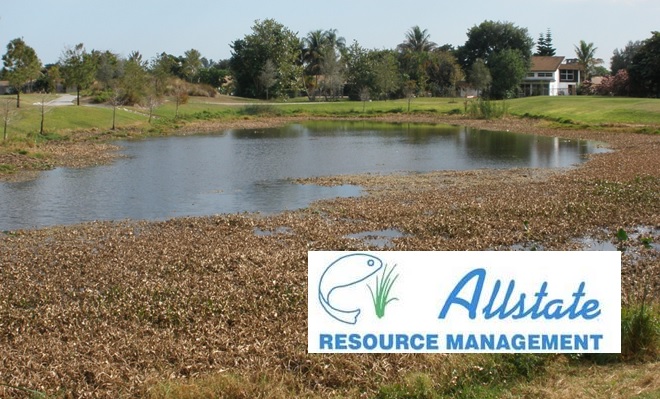Algae growth in South Florida lakes is not an uncommon thing, but it seems to be more of a nuisance in the summer months.
Got Lakes? Algae season is coming up!
Here is an article to help you answer all those questions your residents may have!
Author: Stephen Montgomery, Senior Biologist / Allstate Resource Management
 Algae growth in South Florida lakes is not an uncommon thing, but it seems to be more of a nuisance in the summer months. What are the causes of algae growth in our community lakes and why is it more prevalent in our warmer, rainy season? Algae, like all other plants, requires sunlight and nutrients to grow. These ingredients are the primary factors in how much and how fast algae is going to grow, but our urban waterways have unique circumstances that also contribute to the potential for algae growth during our summer months.
Algae growth in South Florida lakes is not an uncommon thing, but it seems to be more of a nuisance in the summer months. What are the causes of algae growth in our community lakes and why is it more prevalent in our warmer, rainy season? Algae, like all other plants, requires sunlight and nutrients to grow. These ingredients are the primary factors in how much and how fast algae is going to grow, but our urban waterways have unique circumstances that also contribute to the potential for algae growth during our summer months. The primary nutrient for freshwater algal growth is phosphorous. Phosphorous occurs naturally in our lakes from several sources such as decomposing organic matter, bottom sediments, animal waste from wildlife utilizing the water, and even interaction with the air. Strong winds can carry dust, dirt, leaves, and palm fronds and deposit them in lakes. All of these become sources of additional nutrients as they break down.
Aside from natural causes, certain actions by people also contribute to elevated algae production during the summer. Irresponsible fertilization combined with frequent saturating rains can cause runoff of materials down those slopes and into the water.
One of the most common contributors to excessive algae growth is also one of the most avoidable: The grass itself. The sod around our lakes is packed full of every nutrient an algae could need. It’s no surprise that our lawns get mowed more frequently in the summer months. When grass clippings are blown into the lake they accumulate along the shoreline and begin to decompose. Each blade is a storage container of algae fuel and as they begin to break down they release it into the surrounding water. Mowers should stay sufficiently back from the shoreline or mow so that large amounts of clippings are not thrown into the lake. (grass clippings in a lake is a recipe for algae)
Have more questions? We love them!
Contact us today at:
954-382-9766 or info@allstatemanagement.com
Discover more from SFPMA
Subscribe to get the latest posts sent to your email.


